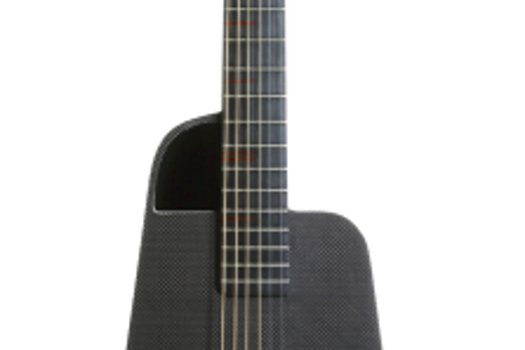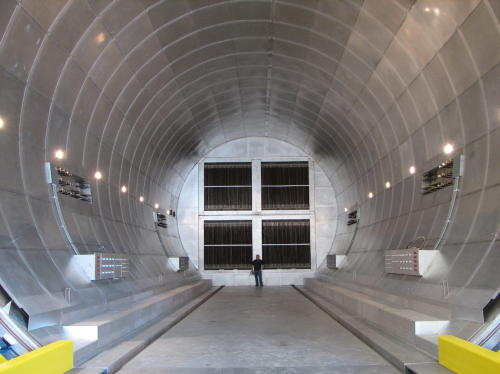
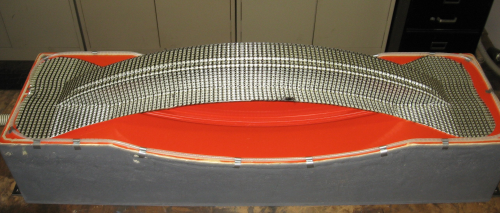

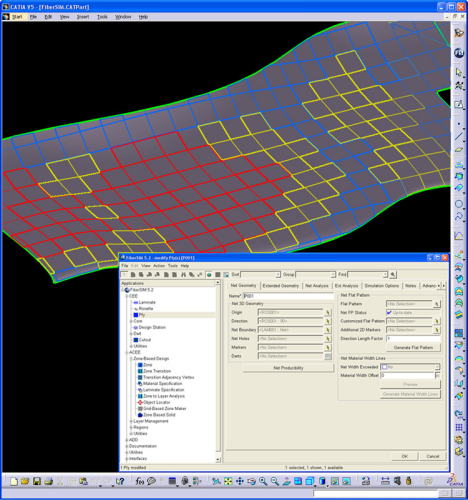
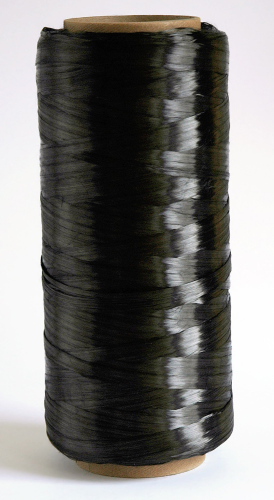
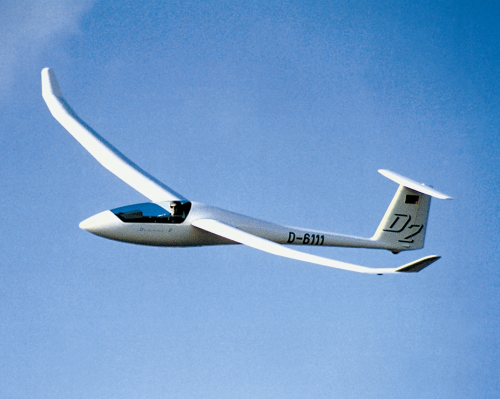
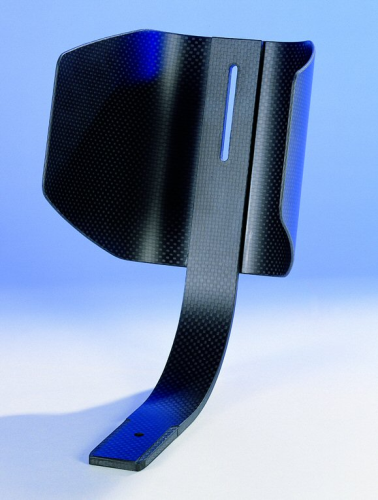
Once the domain of aerospace, auto racing and high-end sporting goods, carbon fibre reinforced plastic (CFRP) composites are increasingly being used in a host of new manufacturing applications where material cost is secondary to performance, high strength and reduced weight considerations.
Carbon fibre composites have long been used in aerospace applications due to the material’s significant strength, stiffness and weight advantages over aluminium alloys. Half the weight of Boeing’s new 787 passenger airliner is made up of carbon fibre composites, which make it stronger, lighter, more fuel efficient and cheaper to fly.
Aerospace is the largest segment of the market for carbon fibre at 21%, according to aerospace consultancy AeroStrategy LLC. In 2008, CFRP constituted 37% of aerospace composite demand, compared to 35% for glass fibre reinforced plastics (GRP). Boeing and Airbus aircraft account for nearly 60% of today’s demand, according to AeroStrategy. Other major consumers of CFRP are the industrial (15%), sporting goods (14%), wind energy (11%) and automotive (10%) sectors, the consulting firm relates.
Supply exceeds demand
The global carbon fibre market has grown at double digits over the last five years and is expected to continue growing but at a slower pace, increasing from 2008’s level of US$1.5 billion to $2.5 billion in 2014, according to a new Lucintel report Growth Opportunities in the Carbon Fiber Market 2009-2013. Positive growth of 1.8% is expected this year, primarily due to increased demand in commercial aerospace and wind energy, says Lucintel. The carbon fibre market is expected to rebound in 2010 and beyond as the market recovers from the credit crunch and economic recession, Lucintel reports.
“From the perspective of carbon fibre suppliers, demand has slipped noticeably in the last six months as the global economy has worsened. At the same time, supply has increased to the degree that some manufacturers now have ample supplies of carbon fibre with relatively low lead times to consumers,” Lucintel observes.
Major manufacturers of carbon fibre feel that the weak demand will likely continue until a turnaround can be identified in the global economy, the report notes.
Focus on automotive
The automotive industry has been slower to embrace carbon fibre composites, reserving them for high-end vehicles and race cars. Japanese textile manufacturer and carbon fibre products supplier Toray Industries has developed a carbon fibre processing method that it says paves the way for mass production of lightweight, fuel-efficient automobiles.
The process, which integrates proprietary resin transfer moulding (RTM) techniques with improved resin infiltration and hardening technologies, is said to shorten the moulding cycle to produce CFRP parts down from 160 minutes to 10 minutes. The CFRP parts are 50% lighter than steel and 1.5 times safer in a collision, says Toray, whose project to develop CFRP auto parts is backed by the Japanese government-affiliated New Energy and Industrial Technology Organization (NEDO).
As reported in Reinforced Plastics earlier this year, Toray Industries has invested in ACE Advanced Composite Engineering GmbH, a German developer of CFRP parts for cars and trucks, in a move to expand its automotive business in Europe. Toray plans to expand its sales of CFRP for automotive applications to approximately 50 billion Yen (US$510.5 million) by around 2015.
Oxeon AB, the Swedish manufacturer of spread tow carbon fibre fabrics, reports that its new TeXtreme® product has enabled a weight savings of 25-30% in body panels of Formula One race cars. Spread tow fabric technology can replace traditional fabrics made of 1k, 3k and 6k carbon tows with TeXtreme fabrics produced from heavier tows of 12k and higher, relates Oxeon.
Anatomy of carbon fibres
Most carbon fibres are made from polyacrylonitrile (PAN) precursors, which are drawn into strands and heated to high temperatures in the absence of oxygen. This process prevents the material from burning, producing fibres made up of tightly bonded carbon atoms which are treated, coated with a protective sizing and spun into yarns of different sizes. Besides PAN, precursors are also made from pitch and cellulose.
Carbon fibres are classified by tensile modulus – the amount of pulling force a fibre can sustain without breaking. Low modulus fibres have a tensile modulus below 34.8 million psi (240 million kPa). At the opposite end, ultrahigh modulus carbon fibres have a tensile modulus of up to 145.0 million psi (1.0 billion kPa), making them 10 times stronger – and 5 times lighter – than steel, which has a tensile modulus of 29 million psi (200 million kPa).
In conventional carbon fibre manufacturing, production of the precursor represents about 51% of the cost, according to C. David Warren, Field Technical Manager, Transportation Materials Research, at the Oak Ridge National Laboratory in Oak Ridge, Tennessee, USA. The lab is developing low-cost precursors based on lignin, a byproduct of the papermaking and the ethanol production processes, as well as some other materials.
Lower cost carbon fibre
One Oak Ridge lab precursor project focuses on polyolefin-based beverage bottles, which Warren calls the ‘holy grail’ for making carbon fibre.
“The problem is it requires an expensive chemical treatment process, which has made it uneconomical,” he notes.
However, the lab recently experienced a research ‘breakthrough’ in this area and started a formal project.
“We are strongly suspicious that we have the problem solved – and that will be revolutionary,” says Warren.
If successful, the technology could cut carbon fibre manufacturing costs by two-thirds, he feels.
US-based Zoltek, a leader in the commercialisation of carbon fibre as a primary composite reinforcement, is continually working on ways to improve the efficiency of its precursor operations in order to increase productivity in the carbon fibre operations and drive cost reduction, according to Zsolt Rumy, Zoltek President and CEO. He observes that the price of carbon fibre has softened in recent months for a few different reasons.
“Recent capacity additions in the industry have increased supply, while delays in the major aerospace programs and the global economic crisis have softened demand,” Rumy tells Reinforced Plastics. “Additionally, we have seen a decrease in commodity prices, notably in acrylonitrile and energy, which are two of the biggest cost inputs in the carbon fibre manufacturing process.”
Rumy does not expect any major changes to the price of carbon fibre in the near term, but the recent progress of the Boeing 787 Dreamliner will begin to absorb carbon fibre capacity, he relates.
“If someone is looking to purchase a few thousand lbs, they can find it, but for a long-term contract for 100 000 or more lbs per year, there are not a lot of choices. In fact, we’re probably the only company who can make that type of commitment,” he adds.
While Zoltek’s current capacity is 29 million lbs (13.15 million kg), the company has the ability to have carbon fibre lines built and producing product in six months to satisfy any opportunity, Rumy says.
“We have the unique ability to modify textile acrylic fibre facilities and have them producing precursor in a very short period of time. As an example, we recently purchased a textile acrylic facility in Mexico and had it producing precursor in less than a year,” he continues.
“Zoltek has greatly improved its capability in both UD [unidirectional] and MD [multidirectional] fabrics and has developed a carbon fibre fabric that is much easier to infuse,” reports Rumy. “We believe that an easily infusible fabric will facilitate the transition to carbon fibre for customers who are accustomed to infusing glass fibre fabrics.”
Carbon fibre in the wind
The global wind energy industry is growing by leaps and bounds and consuming more and more composites. Wind turbines come in a variety of sizes. Utility-scale turbines often have blades over 40 m long. And the trend is toward longer and longer blades to increase the energy-producing efficiency of the turbine. Manufacturers are finding that as wind turbine blades grow longer, the stiffness advantage of carbon fibre composites outweighs the cost differential compared with glass fibres.
Zoltek believes that near-term growth will be driven by increased business from the wind turbine market, as well as CNG tanks and aerospace. Rumy observes that the “fundamentals of the wind energy sector remain strong with clear potential of continuing 20-25% annual growth.” He notes that Zoltek has developed a low-cost prepreg for heavier areal weight applications such as wind turbine blades.
Automated production
For advanced composite production, automated tape laying (ATL) machines and fibre placement systems (FPS) are used to reduce the cost of manual lay-up. A tape laying machine, guided by a computer numerically controlled (CNC) system automatically places strips of resin pre-impregnated continuous fibre material onto a tool. Fibre placement systems have CNC-guided heads which place pre-impregnated tows of continuous carbon fibre on a mandrel to build up parts.
MAG Cincinnati, in Hebron, Kentucky, USA, manufactures automated systems, including the Viper® Fiber Placement System, which combines tape laying and filament winding with advanced computer control. The Viper provides 7 axes of motion and is well-suited to highly contoured aircraft structures such as cowls, ducts and fuselage sections, as well as pressure tanks, tapered casings, fan blades, spars and C channels. The company also produces the Charger® line of tape layers, which are now available in low-rail gantry platforms and featuring new-generation contour tape heads.
Forest-Liné, the French manufacturer of FPS and ATL systems, has developed TapeLay® software, a computer aided manufacturing (CAM) package fully integrated with CATIA V5® for the manufacturing of composite parts with single or double curvatures. Forest-Liné offers the ACCESS-ATLAS fully automated automatic layering system for cutting and laying of prepreg from 50 mm to 150 mm (2 in. to 6 in.) in width on convex or concave shapes.
Entec Composite Machines Inc, a Zoltek company based in Lebanon, Oregon, USA, developed the first computer-controlled filament winding machine and the first pattern-generation and simulation software, FiberGrafiX™. Entec has introduced a filament winding package that facilitates winding with 50k commercial-grade tow and enables users to increase winding speeds for laying down significant amounts of fibre as quickly as possible.
Producing preforms
Reinforcing fabrics used in composites production are often combined by stitching or pinning them together into preforms. Eurocopter, a leading German manufacturer of helicopters, and several partners developed technology which makes preforms by using advanced stitching methods and a new thermobonding process to hold multiaxial non-crimp fabrics together. The process was designed to lower the costs of manufacturing by reducing manual operations while improving reproducibility and flexibility for creating complex shapes.
Elsewhere, a patented non-run stitch technology that reduces runs in non-crimp, multiaxial fabrics has been developed by V2 Composites Inc of Auburn, Alabama, USA. The company specialises in the design and fabrication of custom knit matrix reinforcement fabrics, using its unique V-Lock™ stitch technology for bonding fabrics. V-lock prevents frayed edges, running stitches and deconstruction of fabrics, making non-crimp multiaxial fabrics more stable than conventional stitching.
With V-Lock, a polyester stitch medium with proprietary thermal coupling is used to weld ascending stitches together on the loop side of the fabric during manufacturing. The fabrics are bonded with a loose stitch, which promotes resin flow and reduces the risk of dry spots during lamination. Varied fibre types and weights can be blended within an individual layer and can also be combined with mats or veils to meet the mechanical and economic requirements of the manufacturing application.
|
The price of new carbon fibre runs upwards of £10 000 (US$13 974) a tonne, which is why there is a push toward recycling it. Engineers at the University of Nottingham in the UK are working to develop low-cost, high-strength manufacturing materials based on recycled carbon fibres in a £900 000 ($1 258 000) project called the Affordable Recycled Carbon Fibres (AFRECAR) project. Funded by the government-established Technology Strategy Board, the project involves a group of partners: Boeing, Ford Motor Company, composite materials supplier Advanced Composites Group, fibre processing company Technical Fibre Products, carbon fibre manufacturer Toho Tenax and carbon fibre recycler Milled Carbon Ltd of Birmingham, UK. Old airframes make excellent targets for this effort. Out-of-service aircraft sitting in aircraft ‘graveyards’ in deserts across the world could be recycled and the valuable carbon fibre harvested for reuse rather than disposing of it in landfills, the university relates. Emerging commercial processes for extracting the carbon fibre from a composite leave two issues unsolved: how to process the recycled fibre to produce new products that can give the very best structural properties and how to improve on the existing recycling process to recover useful products from the polymer matrix, researchers in the University’s Faculty of Engineering explain. Until now, carbon fibre recycling has used thermal processing to break down the resin, leaving clean carbon filaments. But this process leads to a degraded product. The new research will investigate a cleaner and more efficient way to extract the fibre by dissolving the composite material in supercritical fluids. This method will also extract the chemicals out of the polymer, resulting in less waste, says the university. In addition, the research involves new techniques to process the recycled carbon fibres into forms that can achieve much greater proportions of recyclate in a composite to provide better structural properties. The recycled materials would be used in non-critical applications such as seats, overhead lockers and other interior features on aircraft as well as for automotive body panels. |
’Nanostitching’ preforms
Engineers at the Massachusetts Institute of Technology (MIT) are using carbon nanotubes to stitch together plies of carbon fibre materials which could make aircraft skins and other products perhaps 10 times stronger at a nominal increase in cost, according to Brian L. Wardle, a professor in MIT’s Department of Aeronautics and Astronautics. His theoretical paper offers the nanotube solution to problems with conventional stitching using relatively large stitches or pins, which can damage the carbon fibre fabrics.
‘Nanostitching’ aligns billions of carbon nanotubes perpendicular to each carbon fibre layer and uses a thermal process to melt a polymer ‘glue’ between the layers. The nanotubes are sucked up into the polymer as it melts, filling the spaces around the carbon fibres and ‘stitching’ the layers together, Wardle explains. Since the nanotubes are 1000 times smaller than carbon fibres, they cause no damage to them. He maintains that dramatic improvements can be achieved with nanotubes comprising less than 1% of the mass of the overall composites, while adding only a few percent to the cost of the composite. In Chesapeake, Virginia, USA, a new low-energy binder system for carbon fibre preforming is being developed by American GFM. In addition to proprietary binders, the company manufactures a variety of equipment, including machines for ultrasonic cutting, handling and forming prepreg and dry materials.
“We are in the final stages of developing a low-energy binder system for carbon fibre material based upon a complex chemistry that uses anaerobic curing systems,” relates Dan Buckley, Manager, R&D.
The new binder cures at about 150°F, which allows the binder to be handled and placed in the tooling in ambient air. A vacuum is pulled, and the temperature is elevated to start the curing process.
Buckley, who holds numerous patents in composites processing and related fields and is a co-founder of the Composites Division of the Society of Plastics Engineers, tells Reinforced Plastics that he sees a growing demand for dry reinforcements as the manufacturing base evolves more into resin transfer and infusion type processing. Also on the rise is demand for carbon fibre prepregs as well as for woven and engineering-type fabrics for CFRP composites.
Computerising composites
Design and engineering computer software plays an important role in producing complex structures made of high-performance composites. VISTAGY Inc, a Waltham, Massachusetts, USA-based provider of industry specific engineering software and services, has helped pioneer the efficient use of composites, including aerospace, high-performance automotive, marine and wind energy.
VISTAGY’s FiberSIM® is a comprehensive software suite that addresses the entire composites engineering process, from concept, laminate definition and ply creation through simulation, performance optimization, documentation and manufacturing.
“Composite materials provide all kinds of potential benefits, but there’s a higher degree of complexity in working with composites than with more traditional materials such as metal,” observes Steve Luby, VISTAGY President and CEO. “So it is critical to have the right tools and methodologies if you expect to maximise the value of composites. The irony is that when manufacturers achieve great efficiency with composites, they actually end up using less of them.”
Process innovations
An electrically-heated carbon fibre mould which takes advantage of the electrical conductivity of carbon fibre to combine mechanical-resistance and heating functions was declared a winner in the Process category of the 2008 JEC Innovation Awards. Developed by the University of Applied Sciences and Arts at Dortmund, Germany, along with German Fibretech Composites and other partners, the innovative aspect lies in the arrangement of the carbon fibres, the judges noted. While only the fibres in one direction receive electrical power, the perpendicular fibres also conduct electricity.
The mould consists of a honeycomb core and two quasi-isotropic skins each made up of two carbon fibre layers. Intended for the production of large parts such as wind turbine blades and boat hulls in short or medium-run production, the mould retains high mechanical and dimensional stability during the thermal cycle, ensuring high dimensional accuracy of the moulded parts, the judges stated. The University of Dortmund has created a licensing system for the technology and supplies complete production systems.
Another innovative product is the Econoclave™ 2x4, featuring efficiencies in autoclave design. The product is an affordable, tightly integrated system from autoclave specialist ASC Process Systems in Sylmar, California, USA. Measuring 24 in.(61 cm) in diameter and 48 in.(122 cm) in length, the Econoclave is designed for small-scale production, R&D and university use.
A larger version, the Econoclave 3x5 measures 3 ft x 5 ft (0.91 m x 1.52 m).
ASC Process Systems also produces autoclaves at the opposite end of the size scale. In 2006, the company fabricated an autoclave with an inside working diameter of 30 ft (9.14 m) and length of 76 ft (23.2 m) for Vought Aircraft in Charleston, South Carolina, USA.


